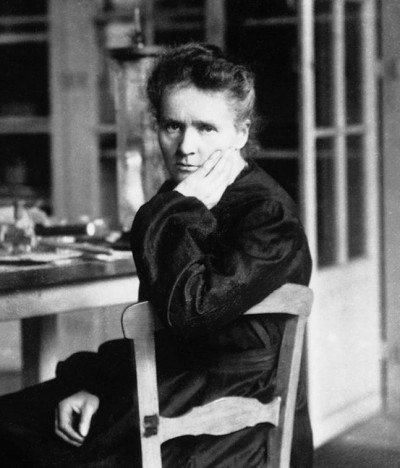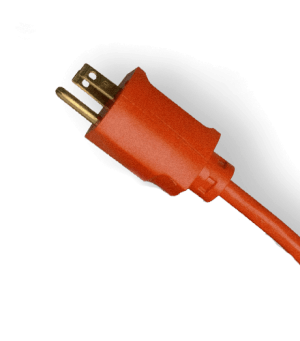Women in STEM today
Discover Canadian women currently working in STEM fields and find your role model.

Overview
Students learn about barriers that exist today for women in STEM fields by playing a numbers game, then research women working in STEM fields in Canada as role models. Next students choose a role model to nominate as an ambassador for STEM.
Part of the Women in STEM, then and now unit.
Instructions
What you'll need
- Nomination for ambassador in STEM student handout, one copy per student
- Individual whiteboards or paper and pen, one per group of 4-5 students
- Access to computers or tablets and internet for research, one per pair (or individually)
- A timer
Introduction
Start the activity by having a class discussion about women like Ada Lovelace and Mary Jackson who contributed to STEM fields throughout history. We recommend completing the previous activities in this unit.
What do the numbers say?
- Begin by asking students if they think women have equal opportunity in STEM today. Ask students to share their ideas. Perhaps they can think of careers where there are more women like the medical field and others like engineering where there are still inequities.
- Play a game to reveal some of the realities of women in STEM today, using the following steps.
- Start by writing the following numbers on the board in a grid pattern, as shown:
44 27 22 2 15 12 47 33 - Put students into groups of 4-5 and distribute a whiteboard or paper to each group. Tell students you will ask a question and set a timer for 30 seconds. During this time students can discuss the answer choosing one of the numbers on the board. When the timer goes off have students write and hold up their answer.
- Each of these numbers is a percentage so explain this to students before beginning the game. A percentage (%) is a number that represents a fraction of 100. Women represent about 50% of the population, which is 50/100 or ½ (half).
- Read the following questions, reveal the answer and assign each group with the correct answer one point per question.
- Percentage of people working in STEM in Canada who are women (answer: 27%)
- Percentage of people working in artificial intelligence who are women (answer: 22%)
- Percentage of researchers, globally, who are women (answer: 33%)
- Percentage of female PhD graduates worldwide in 2018 (answer: 44%)
- Percentage of funding directed to start-ups founded by women in 2019 (answer: 2%)
- Percentage of the workforce in Canada that are women (answer: 47%)
- Percentage of management roles filled by women in STEM (answer: 15%)
- The group with the most points at the end wins the game.
- Debrief the game and ask students if any of the numbers surprised them. Explain that if only 2% of funding was directed to start-ups founded by women this means 98% (nearly all) of funding was directed to start-ups founded by men. Similarly, if 15% of management roles are filled by women in STEM this means 85% of management roles are filled by men. However nearly half (44%) of the population were female PhD graduates worldwide in 2018 so intelligence and capability are not in question.
- Ask students why they think there is such a gap in women working in STEM. What has happened in the past, and what happens today? Some things to consider:
- Education: In the past and in some cultures today girls were not given the same educational opportunities as boys. Historically they were barred from universities or associations, left out of jobs or the credit for their work was taken by male co-workers or supervisors. Black women and other women of colour faced even more barriers to education due to segregation, discrimination, financial barriers and other inequities. What can we do to change this?
- Stereotypes: Many individuals might still associate STEM fields with masculine qualities which can be discouraging to some girls. What can we do to change this?
- Work environment: Many workplaces are male-dominated environments and have a lack of women role models and this could contribute to women not entering or leaving STEM jobs. What can we do to change this?
- Networking and community: Since many STEM jobs are historically male-dominated, it could be challenging for girls and women to find supportive networks. What can we do to change this?
- Invite students to share their experiences. Have they ever been told they should like or do something because they are a boy or a girl, maybe in a sport or other activity? How did that make them feel? Have they seen adult men or women doing jobs or activities that other people might think are just for the opposite gender? Consider careers like nursing, electrician, computer programmer, stay at home parent, fire fighter or car mechanic.
Role models in STEM
- Provide each student with a copy of the Nomination for ambassador in STEM student handout and each pair of students (or individually) with a device for internet access.
- Direct students to the STEMforGIRLS site, a Canadian website that features female role models working in STEM fields. It is inspiring for boys and girls to explore both the different careers featured, some they may not know exist, and the women working in these fields.
- Encourage students to use the search tags at the bottom of the page to find someone in a field they are interested in or to find someone that reminds them of themselves or their families and friends. For example, they might look for someone who is Indigenous, living with disabilities, neurodiverse, working in fields like energy or science or doing a job with hands-on activities.
- After spending some time exploring the site invite students to pick one person to nominate for ‘ambassador of the year in STEM” who inspires them. Using the Nomination for ambassador in STEM student handout complete the information on the handout to make a compelling nomination. Alternatively, students could create a social media post to nominate their ambassador choice.
Have students present their nominations for ambassador to the class and have the class vote for their top choices.
Modify or extend this activity
- Have students role play their nominee for ambassador and present their acceptance speech. Encourage them to think about what perspective their nominee might share, including trials they've overcome and hopes for the future.
- Watch the video: https://www.youtube.com/watch?v=QqSKBRCVkPM which shares positive actions we can take to engage more girls in STEM.
Curriculum Fit
Careers 5
Big ideas:
- Public identity is influenced by personal choices and decisions.
- Exploring our strengths and abilities can help us identify our goals.
Content:
Personal Development
- Emergent leadership skills.
Curricular Competencies:
- Identify and appreciate their personal attributes, skills, interests, and accomplishments and their growth over time.
- Recognize the need for others who can support their learning and personal growth.
Assessments
See the Women in STEM, then and now unit for a marking rubric to help assess student success in all activities in this unit.
General observations:
- Assess students’ understanding and interpretation of the STEM numbers game.
- Assess students’ critical thinking skills in the discussions of barriers for women in STEM.
- Assess students’ engagement and focus exploring STEM careers and nominating an ambassador.
Teaching Notes
Women and girls in STEM today
See: International Day of Women and Girls in Science
According to the United Nations, women are typically given smaller research grants than their male colleagues and, while they represent 33.3% of all researchers, only 12% of members of national science academies are women.
- In cutting edge fields such as artificial intelligence, only one in five professionals (22%) is a woman.
- Despite a shortage of skills in most of the technological fields driving the Fourth Industrial Revolution, women still account for only 28% of engineering graduates and 40% of graduates in computer science and informatics.
- Female researchers tend to have shorter, less well-paid careers. Their work is underrepresented in high-profile journals and they are often passed over for promotion.
According to Randstad, one of the top employment agencies in Canada, here is a look at women in STEM careers in 2023:
- Women make up less than 25% of people employed in STEM careers. According to Statistics Canada, 34% of Canadians with a STEM degree are women. They make up only 23% of Canadians working in science and technology.
- As of 2019, there are over 6.3 million women scientists and engineers in the European Union, representing 43% of STEM employees.
- According to research conducted by the United Nations:
- Less than 30% of the world’s researchers are women.
- Nearly 22,000 more women are working as science and engineering technicians than in 2016. However, women still only make up 27% of the total workforce.
- Women make up 42% of the total number of science professionals.
- Women only make up 15% of the total management roles in science, engineering, and technology.
Closing the gender gap
UN Secretary-General Guterres calls for more empowerment for women and girls:
- Fewer than 30% of the world’s scientific researchers are women
- “Science and innovation can bring life-changing benefits, especially for those who are furthest behind – such as women and girls living in remote areas, the elderly and people with disabilities.”
- According to the UN Educational, Scientific and Cultural Organization (UNESCO), women in science, technology, engineering and maths (STEM) are published less, paid less for their research and do not advance as far as men in their careers.
Role Models
The STEMforGIRLS site is a resource for educators and students including featuring many female role models working in STEM fields.







